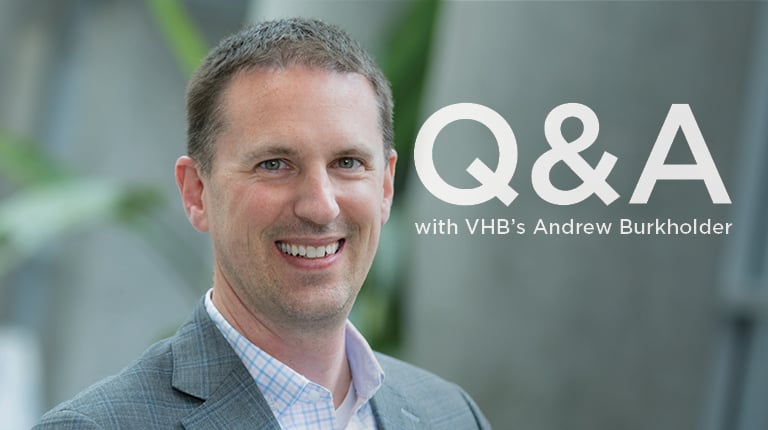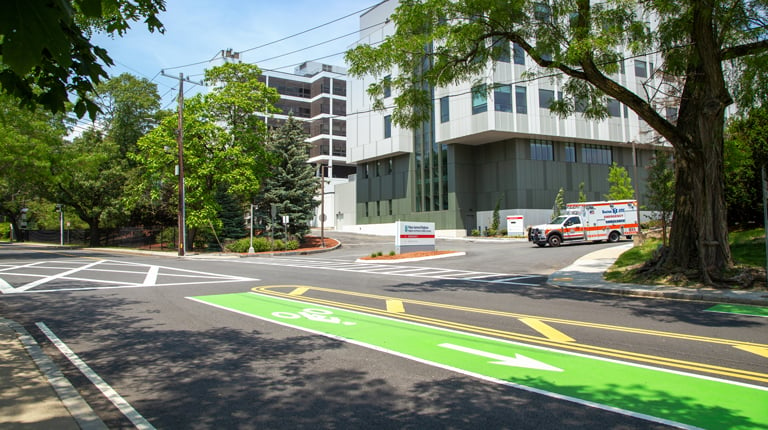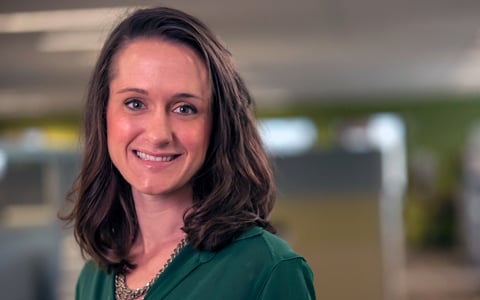
Katie Shannon, AICP, CNU-a, LEED GA, Senior Community Planner at VHB, is helping our most vulnerable communities develop new Vision Zero Safety Plans and Resiliency Plans to not only address roadway and pedestrian safety but also smart community initiatives and climate event mitigation and adaptation. She is part of an integrated team of VHBers who are helping diverse clients prioritize local needs, including Florida municipalities like Pinellas County and the City of Orlando, and transportation agencies such as Metropolitan Atlanta Rapid Transit Authority (MARTA) in Georgia and Luis Muñoz Marín International Airport (SJU) in Puerto Rico.
We spoke with Katie to find out more about the issues facing VHB clients and how her past career in education informs her people-centered approach to community planning.
VHB: You are working on a number of new Vision Zero Action Plans in Florida. Give us a bird's-eye view of what goes into this kind of safety planning.
Katie: Yes, we have eight of these essential safety plans in the works in Florida, including plans in Orange County, Lee County, Charlotte County, Belle Isle, Edgewood, Winter Park, Maitland, and Eatonville.
Developing a Vision Zero Action Plan happens through an integrated approach in which VHB reviews data trends to understand the contributing factors of crashes, followed by meeting with community stakeholders to identify opportunities to eliminate those crashes. Vision Zero is grounded in the need to establish a culture shift to create safer transportation systems and protect people from the reality of the lives lost on our streets.
Unfortunately, as data reveals, some places and spaces induce unsafe conditions for roadway users, especially for more vulnerable bicyclists and pedestrians. Vision Zero applies a comprehensive approach to assess what type of educational, engineering, enforcement, or equity solutions may be implemented toward reducing the risk of these occurrences.
We are fortunate to have VHBers who work at a federal level to provide critical guidance and insight on what type of countermeasures may be adopted in these plans, offering a toolbox of solutions for our local clients to imbed in their capital improvement programs or operational processes.
For me, the most important component of these plans is working with our communities to engage people in one-on-one conversations about safety needs.
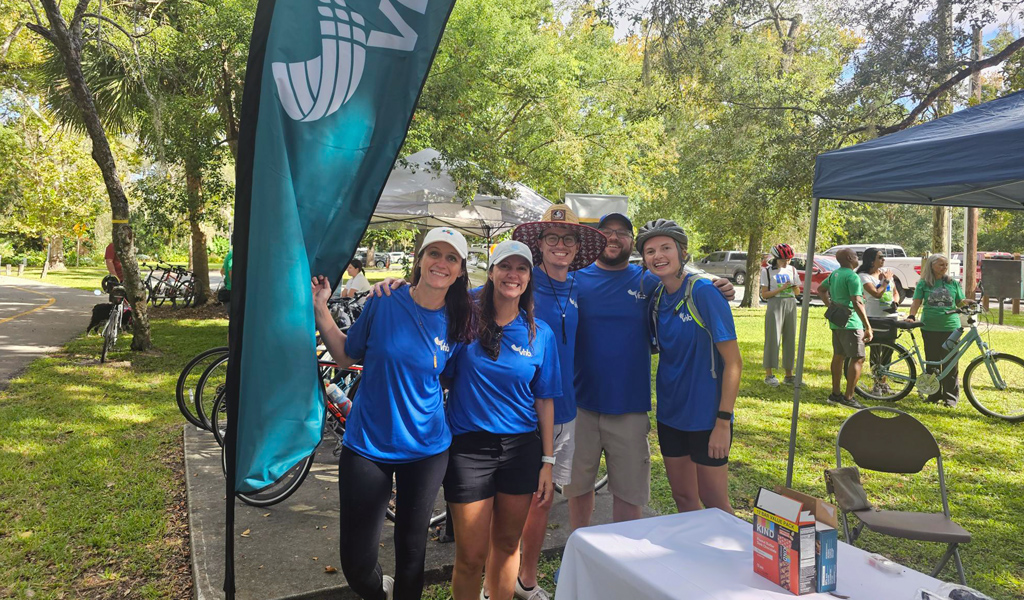
VHB: How are these plans funded?
Katie: It’s a mix but cities and states can get outside assistance. This is especially true in Florida, where we can help communities prepare for and utilize millions in dollars of federal Safe Streets For All (SS4A) funding earmarked for local pedestrian safety programs across the U.S. and disaster relief funding.
VHB: What threats are clients most concerned about when it comes to resiliency?
Katie: Identifying a top threat is a difficult decision as we take a comprehensive, all-hazards approach to understanding a myriad of climate threats—like extreme heat, coastal flooding, drought, or airborne diseases—and overlay those factors to find potential synergies or co-benefits in adaptation or mitigation strategies that better protect us from not just one but numerous threats.
We also tailor our understanding of climate hazards by region, so a Resiliency Plan for the City of Orlando will look different than what we recommend for Pinellas County in Florida, Historic Jamestown in Virgina, Tucson International Airport, or San Juan International Airport in Puerto Rico.
That being said, I think extreme heat is one of those climate threats that spans a diverse portfolio of resiliency work, especially given its similar impacts on the built environment, natural resources, and people. Additionally, adaptation or mitigation strategies identified to combat extreme heat often inform and lead to resilience recommendations to protect communities from other climate hazards, such as hurricanes or drought.
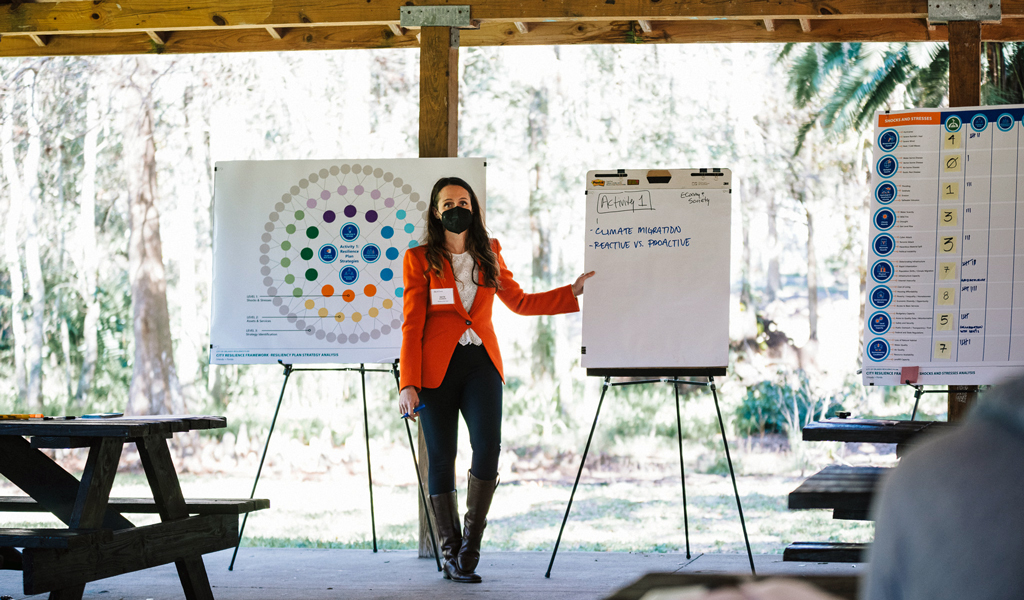
VHB: You are working on multiple community Resiliency Plans in Florida. Is this state moving at a faster rate of speed to shore up resiliency than others? What's the urgency for coastal communities, and what kinds of programs can have an immediate impact?
Katie: The urgency for coastal communities at risk of sea level rise is high. Sea level rise can lead to increased flooding, erosion, and storm surges that damage homes, infrastructure, and natural habitats. One exciting way VHB is helping protect communities from the effects of sea level rise is through environmental solutions to create more resilient shorelines and habitats like the Ohio Creek Watershed project.
Our work in resiliency in the Southeast has led to projects that will help develop solutions for the multi-faceted problems that communities face in the wake of climate change. We also partner with emergency management teams and planners to understand what best practices are in place to support communities in the preparation of climate threats.
VHB: Where do you see the biggest opportunity for growth in safety and sustainability, and what makes our approach different?
Katie: It is an all-hands-on-deck approach. The VHB resiliency and sustainability practices involve all our markets and services, which collaborate to understand needs and establish a baseline assessment of what is already being done and what can be accomplished. Protecting critical community assets and supporting necessary lifelines includes assessing the need for more resilient energy systems, protecting our natural resources, offering placemaking solutions that integrate blue and green infrastructure, re-engineering our roadway systems, and integrating applied technologies into each system to support data access and management.
Following our integrated approach, we can tailor implementation processes for department champions to effectuate both short- and long-term resiliency initiatives while tracking progress over time.
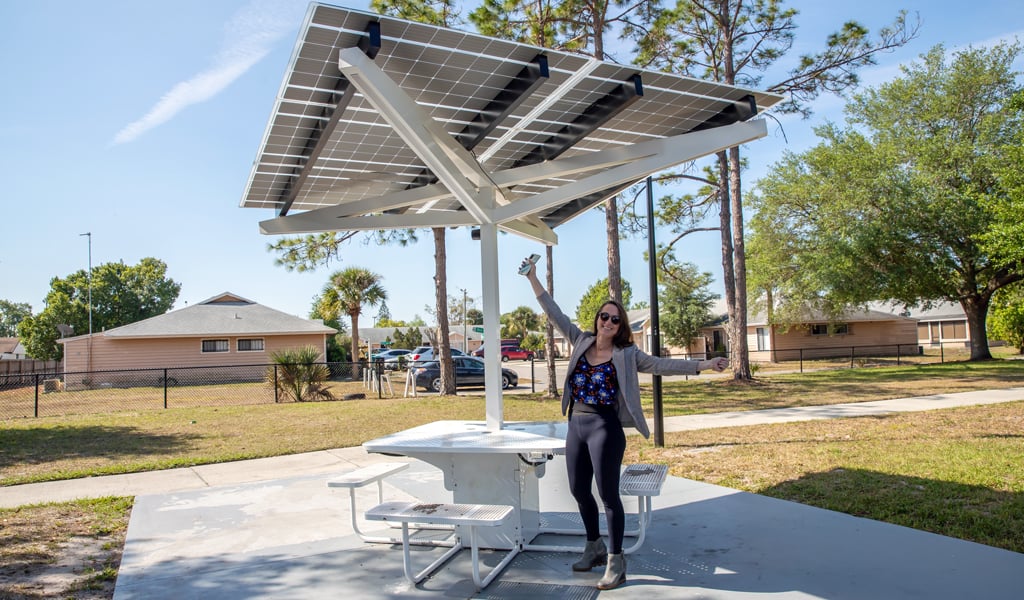
VHB: You had an interesting career path into planning from education. How has that informed your role at VHB?
Katie: As a former high school art teacher, I understand the needs of our youth and witnessed kids' innate intuition about what elements make great spaces. It was a driving factor in my choice to become a planner.
I read Happy City in graduate school (I have a Master of Science degree in Civic Urbanism from Rollins College) and was struck by a quote in the book from the former Mayor of Bogota Enrique Penalosa, "The measure of a good city is one where a child on a tricycle or bicycle can safely go anywhere. If a city is good for children, it will be good for everybody else."
Working with students from diverse backgrounds and with different needs has helped me to better understand how to comprehensively think about the diverse needs of a community and design spaces that are inclusive, accessible, and more emblematic of the rich cultures we live in.
Connect with Katie via email or LinkedIn, and discover more about safety and sustainability practices across the east coast.

